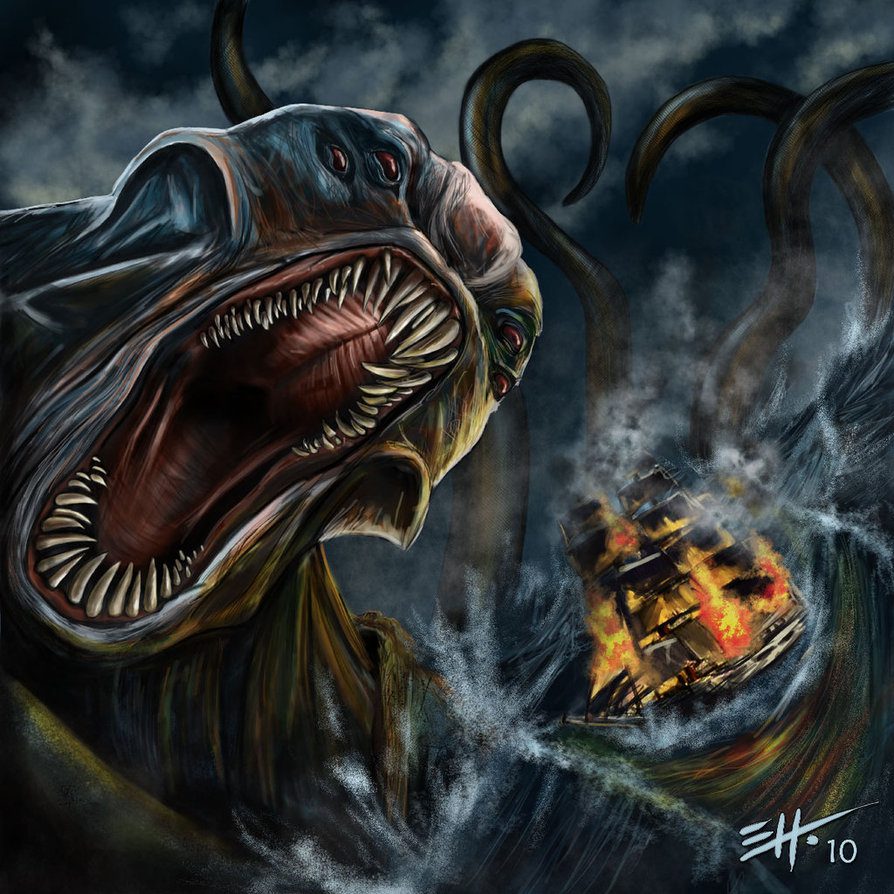This article explores the differences and similarities between two legendary sea monsters – the Kraken and the Leviathan. The Kraken originates from Norwegian folklore and is depicted as a giant cephalopod-like creature that capsizes ships. It symbolizes the uncontrollable forces of nature. The Leviathan, rooted in ancient Hebrew and Mesopotamian mythology, is described as a massive sea serpent or multi-headed creature that represents chaos and destruction. The physical characteristics of the Kraken include powerful tentacles dwarfing a ship, while the Leviathan is depicted with reptilian features. Both creatures have been referenced in literature, art, and pop culture, maintaining their iconic status.
Titans of the Sea: Kraken vs. Leviathan – A Clash of Mythologies
Introduction
Throughout human history, different civilizations across the globe have crafted fascinating stories about colossal sea creatures. Amongst these mythical creatures, the Kraken and the Leviathan stand tall as the most mighty, feared, and respected icons of the deep sea. Their tales have been passed down through generations, spawning countless legends and captivating imaginations. This article aims to explore the differences and similarities between these two legendary sea monsters.
Origins and Cultural Significance
1. Kraken
The Kraken’s origins can be traced back to the Norwegian folklore where it was portrayed as an enormous cephalopod-like creature. With its colossal tentacles reaching out from the depths, it was believed to capsize ships and devour sailors. The Kraken symbolized the uncontrollable forces of nature, serving as a cautionary tale to sailors voyaging through treacherous waters.
2. Leviathan
The Leviathan, on the other hand, finds its roots in ancient Hebrew and Mesopotamian mythology. Described as a massive sea serpent or a multi-headed creature, it represented chaos, destruction, and the embodiment of evil. Some interpretations even linked the Leviathan to primordial creation myths, associated with the birth of the universe.
Physical Characteristics
1. Kraken
According to various accounts, the Kraken was believed to have a massive body, resembling that of a giant squid or octopus. It had powerful tentacles, each capable of dwarfing a ship and causing destruction with ease. Its size and strength, often elaborated in tales, only enhanced the fear and awe surrounding this mythical creature.
2. Leviathan
The physical attributes of the Leviathan varied across different cultures and beliefs. It was often depicted with reptilian features, bearing scaly skin, sharp teeth, large horns, and immense eyes. Some accounts described it as being so enormous that it could wrap itself around entire islands or even create whirlpools.
Representations in Literature and Art
1. Kraken
The Kraken gained significant literary attention in the works of Scandinavian authors such as Alfred Tennyson and Jules Verne. It has also been prominently featured in popular culture, including films like “Clash of the Titans” and the “Pirates of the Caribbean” franchise, further cementing its iconic status.
2. Leviathan
The Leviathan has been widely referenced in religious texts and ancient literature, most notably in the Bible. It served as a symbol of God’s power and a representation of the struggle between good and evil. Artists like Gustave Doré and Thomas Hobbes illustrated vivid interpretations of the Leviathan, inspiring a sense of awe and dread.
Modern Interpretations and Pop Culture
1. Kraken
In contemporary times, the Kraken has become deeply ingrained in popular culture, often portrayed as a gargantuan creature that attempts to destroy ships or coastal cities. From video games like “The Witcher” and “Sea of Thieves” to novels and films, the Kraken maintains its position as a formidable antagonist, evoking excitement and captivating imaginations.
2. Leviathan
The Leviathan, with its biblical origins, continues to have a profound impact on modern storytelling and pop culture. It frequently appears in literature, such as Scott Westerfeld’s “Leviathan” trilogy, where it takes the form of a massive living airship. Its imagery also influences artwork, music, and even role-playing games like “Dungeons & Dragons.”
Conclusion
The Kraken and the Leviathan, both titans of the sea, symbolize different aspects of human perception and understanding of the unknown depths. These mythical creatures continue to captivate us, reminding us of our vulnerability against the mighty forces of nature. Whether it’s the chilling sensation of an enormous tentacle wrapping around a ship or an immense sea serpent enshrouded in mystery, the legends of the Kraken and the Leviathan will undoubtedly endure, fueling our imagination for generations to come.
